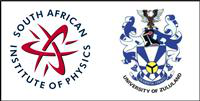Speaker
Abstract content <br> (Max 300 words)
Lanthanide-based luminescent materials have been extensively investigated due to their contribution to a different range of applications [1, 2]. These fluoride based luminescent materials are prominent amongst other candidates because they have lesser energy losses due to non-radiative relaxation processes [1]. Recently, the trivalent praseodymium (Pr3+) is found to be a promising ion in the lanthanide-based luminescent materials for enhancing the solar cell efficiency [3]. In addition, the emission intensity of Pr3+ was found to be strongly dependant on the synthesizing procedures [2]. Nano-structure fluoride of SrF2:Pr3+ was prepared by both the hydrothermal and combustion methods. X-ray diffraction patterns indicate that the samples were completely crystalized with pure face-centered cubic (space group: Fm3m). Both SrF2:Pr3+ samples exhibit green-red emission centered at 488 nm under excitation wavelength 439 nm at room temperature. The dependence of the Pr3+ emission and excitation on the sintering temperature were also investigated and the phosphorescence lifetimes for both synthetic techniques are reported.
References
[1] Bryan M. van der Ende, L. Aarts and A. Meijerink. Adv. Mater. 21, 3073, (2009).
[2] T. Murakami and S. Tanabe. J. Cerm. Soc. J 115 [10], 605, (2007).
[3] Bryan M. van der Ende, L. Aarts and A. Meijerink. Phys. Chem. Chem. Phys. 11, 11081, (2009).
Apply to be<br> considered for a student <br> award (Yes / No)?
yes
Main supervisor (name and email)<br>and his / her institution
Dr. E Coetsee, Coetseee@ufs.ac.za (University of the Free State)
Level for award<br> (Hons, MSc, <br> PhD)?
PhD
Would you like to <br> submit a short paper <br> for the Conference <br> Proceedings (Yes / No)?
yes

